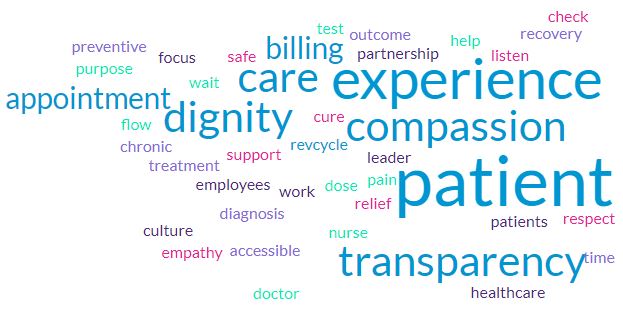Beyond the Exam Room: How Billing and Care Together Shape the Modern Patient Experience
When Americans think about quality healthcare, they often picture top doctors, clean facilities, and advanced treatments. But the truth is, a patient’s experience goes far beyond clinical care—it begins with that first phone call or online appointment request and stretches all the way through to the final bill.
In today’s value-based care environment, improving the patient experience is not just nice to have—it’s a strategic imperative. According to the Agency for Healthcare Research and Quality (AHRQ), patient experience correlates closely with improved clinical outcomes, better patient adherence, and even reduced malpractice risk.

Here’s how forward-thinking healthcare providers—and the billing teams that support them—can build a more patient-centered experience that earns trust, drives loyalty, and gets results.
1. Access Isn’t Optional: Make It Easy to Get Care
Today’s patients expect the same convenience from healthcare that they get from online retailers and food delivery apps. This means:
- Multiple ways to book appointments – Think online self-scheduling, mobile apps, or text-based confirmations.
- Clear office hours and same-day options – Especially for urgent issues or follow-ups.
- Responsive communication – Patients want to ask a question and get an answer without jumping through hoops.
Pro Tip: If your front desk is overwhelmed, consider outsourcing phone triage or adding a virtual assistant to handle after-hours inquiries. It shows patients you care—even when the doors are closed.
2. Speak Human, Not Medical Jargon
Healthcare is complicated. But your explanations shouldn’t be. Whether you’re a provider or a back-office team member, clarity and empathy are key.
- Use plain language when explaining diagnoses, treatments, or costs.
- Invite questions, and don’t rush. A few extra minutes can prevent misunderstandings and reduce no-shows or complaints.
- For non-English speakers or those with hearing impairments, offer interpretation services and visual aids where possible.
According to the Centers for Medicare & Medicaid Services (CMS), clear communication is a core component of patient-centered care and can improve patient outcomes across all populations.
3. Compassion Is Clinical Too
Never underestimate the power of empathy. Patients are not just cases—they are people, often dealing with fear, pain, or uncertainty. Creating a culture of compassion can make all the difference.
- Greet every patient warmly—by name if possible.
- Train staff in trauma-informed care and cultural sensitivity.
- Be mindful of different beliefs, values, and accessibility needs.
Even small gestures—like offering a blanket in a cold exam room or explaining a procedure before touching the patient—can build trust and ease anxiety.
4. Minimize Waits, Maximize Respect
In a digital world, few things frustrate patients more than long wait times with no explanation. Respect your patients’ time as much as your own.
- Provide real-time updates on delays via text or app notifications.
- Avoid overbooking, and use automated reminders to reduce no-shows.
- In the waiting room, offer Wi-Fi, water, or reading material—it shows you care about the total experience.
5. Ask, Listen, Improve: Feedback Isn’t a Formality
Want to know how patients feel about your practice? Just ask.
- Use brief, post-visit surveys (via email or SMS) to gauge satisfaction.
- Regularly review online reviews and respond respectfully—even to criticism.
- Act on the trends you see: If 10 patients mention billing confusion, don’t wait to fix it.
Patient feedback isn’t just about boosting Google ratings—it’s your best blueprint for meaningful improvement.
Where Billing Meets Experience: Why It Matters
Most patients don’t separate clinical care from administrative functions. A confusing bill or unanswered billing question can unravel even the best medical visit. Here’s how RCM (Revenue Cycle Management) teams and billing companies can help elevate the full experience:
Transparent Billing Builds Trust
Patients shouldn’t be surprised by their medical bills. Billing companies must ensure:
- Easy-to-understand itemized statements
- Clear explanations of co-pays, deductibles, and uncovered services
- Support for understanding EOBs (Explanations of Benefits)
Transparency is not just ethical—it’s essential in an era shaped by the No Surprises Act.
Accurate and Timely Invoicing Prevents Confusion
Billing errors erode patient trust and delay payments. That’s why your billing system should include:
- Regular audits to catch and correct coding or eligibility mistakes
- Real-time claim tracking and status updates
- Integration with EMR/EHR platforms to reduce redundancy
A smooth billing process equals fewer complaints—and faster collections.
Human Support That Actually Helps
When patients call with questions about their bill, they need real answers—not voicemail loops or hold music. Offer:
- A dedicated, U.S.-based support team trained in patient-first communication
- Extended hours or call-back options
- Access via phone, chat, and email
Billing is emotional. Empathy goes a long way.
Flexible Payment Options for Real Life
With rising out-of-pocket costs, affordability is a growing concern. Help patients by offering:
- Online and mobile payment portals
- Payment plans for larger balances
- Integration with HSAs, FSAs, and third-party financing
Patients who feel supported financially are more likely to pay—and return.
Final Thought: Experience Is the New Currency in Healthcare
In a competitive and consumer-driven environment, patient experience isn’t a soft metric—it’s a strategic advantage. From the first click to the final payment, every touchpoint matters.
Whether you’re a healthcare provider, practice manager, or billing company, remember: patients may forget what you said, but they won’t forget how you made them feel. A seamless, compassionate, and transparent journey creates more than loyal patients—it creates advocates.





